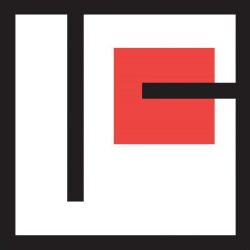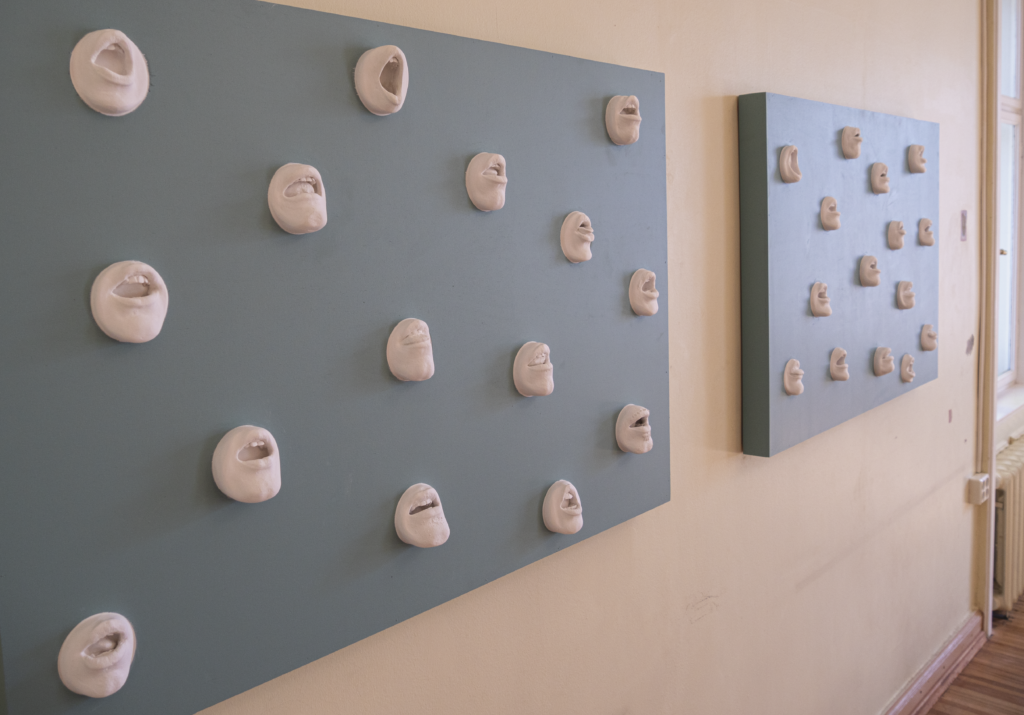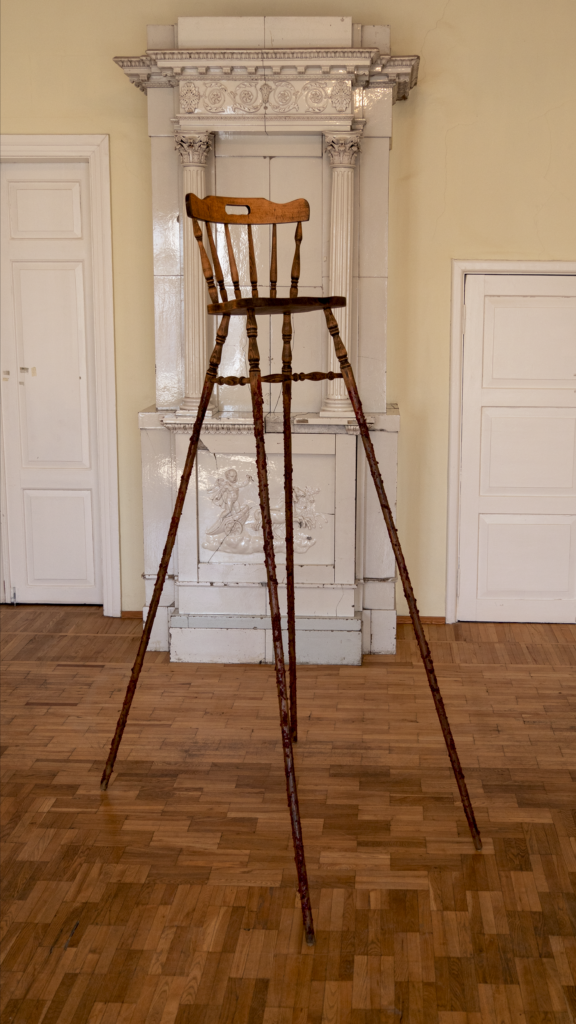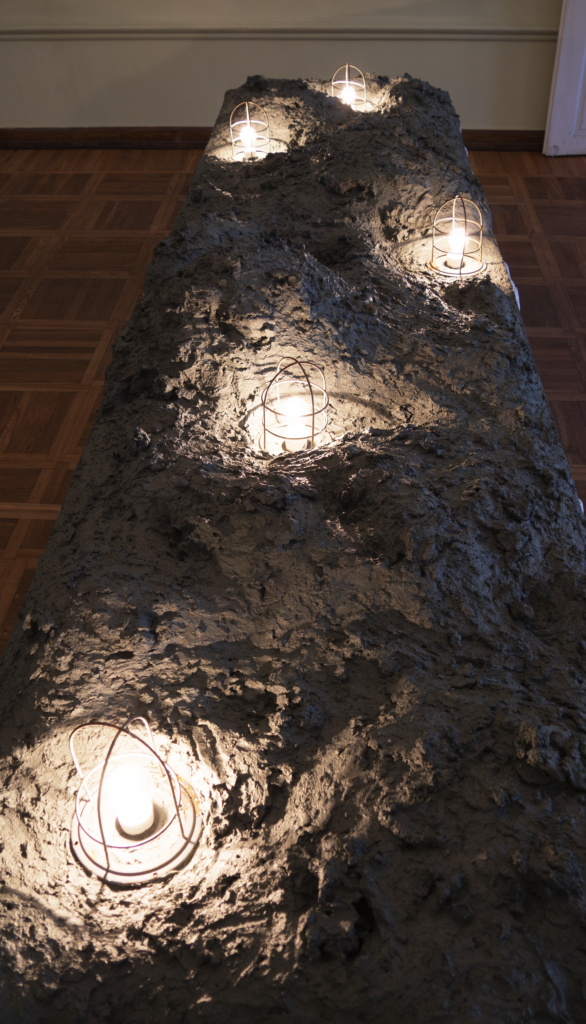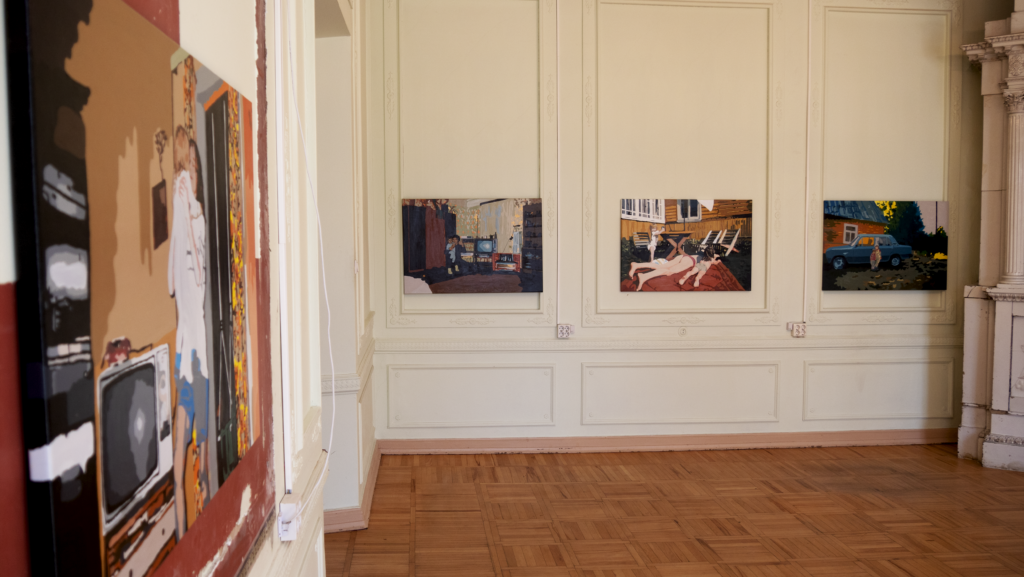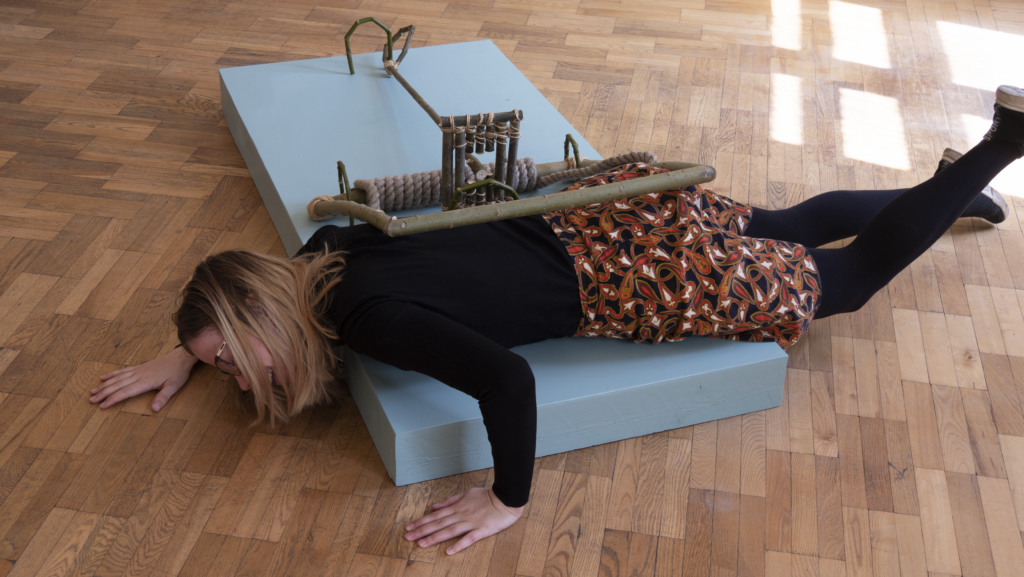Diplomitöö praktiline väljund, isikunäitus „Kodeeritud Mälupildid“, avati 25. mai 2020. Näituseprojekti paberimajanduse etappidest tundsin enesearengut kõige enam eelarve koostamisel ning toetuse taotluste kirjutamisel. Eelarve tabelite loomisel sai kiiresti selgeks, et enne selle koostamist tuleb end põhjalikult kurssi viia erinevate hinnavahemike ja vajalike materjalide maksumustega. Ka toetuste taotlemisega polnud ma varem kokku puutunud ning avalduste täitmine ning aruannete esitamine on kindlasti kasuks edaspidiste projektide elluviimisel.
Praktilises tööprotsessis osutus väljakutseks riigis kehtestatud eriolukorrast tingitud näituse aja, plaani ja toimumise koha muutumine. Kuna näituseks leitud hoone, Tartu, Lai 36 ruumide puhul pole tegemist klassikalise galeriiga, tuli mul täiesti nullist läbi mõelda näituse installeerimiseks olulised detailid: video ruumide jaoks tuli ise õmmelda kardinad; meisterdada projektoritele kinnitused; jõuda kokkuleppele omanikega maalide ja reljeefide kinnitussüsteemide osas, kuna tegemist on muinsuskaitse all oleva hoonega; planeerida oma aega, et organiseerida soovijatele näituse külastamise võimalus jne. Samuti osutus oluliseks kogu mulje mõjutajaks hoone interjöör. Pean tõdema, et kuigi tuli läbi mõelda materjalide ja värvitoonide kasutused, ei tulnud mul oma ideid täielikult muuta, vaid ainult kohandada.
Uurides mulle lapsepõlvest kummitama jäänud ütluste kohta erinevatest allikatest, sain tervikliku ülevaate nende ajaloost ning tähendustest. Et aga tekiks parem arusaam neid ütlusi mulle korrutatud põhjustest, tuli enda ja vanematelt kuuldud mälestuste põhjal kirjutada seostatud lood valitud ütlustega. Kogu see protsess osutus meeldivaks ning nostalgiliseks.
Lõpetuseks tuleb tõdeda, et olen õnnelik, kuna jäin endale kindlaks ning vaatamata tekkinud eriolukorrale riigis viisin oma isikunäituse projekti lõpule. Et kogu nähtud vaev ja pingutused ei lõppeks praeguse isikunäitusega, pean oluliseks mõelda samm edasi ning leida tulevasi ühisnäitusi, festivale või ka lihtsalt galeriiruume, kus teosed võiksid taaskord vaatajateni jõuda.
The aim of my thesis was to create a solo exhibition called Coded Memory Images and therefore research the concept themes. The exhibition is based on the sayings and proverbs of my childhood that have stayed with me the most. The initial impulse for the works comes from folk sayings. Old sayings and proverbs are part of our cultural identity. Because of this, I feel that it is important to knowingly approach the formation of one’s ideology by getting
to know different forms of Estonian folklore, their meanings, context of use and history. The theme of the solo exhibition has the potential to speak to a lot of visitors since our daily lives incorporate different genres of folklore. A total of seven sets of works were created for the exhibition: two video installations titled The Child Can Speak When the Chicken Piss and Good Things Come to Those Who Wait; a collection of five paintings titled A Lie Has No Legs; a set of reliefs titled Close Your Mouth or Your Heart Will Cool Down; and three
sculptures titled Better Safe Than Sorry, No Good Deed Goes Unpunished and The Wiser Gives In.
Initially, the exhibition was supposed to open in Gallery Noorus, but after the state of emergency was established in Estonia, it became difficult to find another venue for the exhibition. The building at Lai 36 has great value when it comes to the architecture of Tartu and I am honoured to present my solo exhibition in the rooms on the second floor of the building.
The theoretical part is divided into two main parts. The purpose of the first part is to give an overview of the important stages of the exhibition project through personal experience. For that purpose, I have compiled a detailed exhibition outline which includes the creation of the concept, the technical descriptions of the works, drafting the budget, applying for fund grants and documentation. In order to have a complete overview of the exhibition it was important to record it on video and in photos. An important aspect of every
project is analysis and feedback, but given that the exhibition will remain open until 21 June, such analysis and conclusions about the exhibition are not included in the documentation.
The second part of the thesis introduces readers to the background of the concept through the history, meanings and use of the sayings and proverbs selected for the exhibition based on personal experience and academic resources. In order to familiarise myself with the topic I read different publications on Estonian as well as foreign folklore and examined the database of the Estonian Folklore Archives.

